All issues

Volume 18, Issue 2
Displaying 1-8 of 8 articles from this issue
- |<
- <
- 1
- >
- >|
-
Makoto UMEDA1968Volume 18Issue 2 Pages 111-121
Published: April 30, 1968
Released on J-STAGE: March 16, 2010
JOURNAL FREE ACCESSDownload PDF (2043K) -
Yoshiho TSUNODA1968Volume 18Issue 2 Pages 122-129
Published: April 30, 1968
Released on J-STAGE: March 16, 2010
JOURNAL FREE ACCESSThe indirect method of immunofluorescence was used to titrate the antibody (Fluorescent antibody, FA) response in patients of Japanese encephalitis, after confirming that they had Japanese encephalitis by complement fixation test and hemagglutination inhibition test.
The fluorescent antibody response patterns of 53 patients were studied. FA was found to appear early in the course of the disease, and tended to increase through the second or third post-onset week, although a few cases had maximal FA titer in the early stage of infection.
The criterion for the serological diagnosis of Japanese encephalitis using indirect FA test was tentatively established as follow: more than 4-fold conversion should be observed between acute and convalescent specimens the latter titer being ≥1:80, or the serum at any stage should have a titer ≥1:160.
According to the above criterion, 52 of 53 patients were positively diagnosed by the FA test. On the other hand, a diagnosis of Japanese encephalitis was made 51 cases out of 53 using HI test, and 36 cases out of 51 using CF test.
Further analysis of the using various serological methods showed positive diagnosis were obtaind by HI test in 50% of patients, by FA test 30%, and by CF test 10% during the first 10 days of illness, by HI test was 90%, by FA test 75%, by CF test 30% during the first 20 days of illness.
It is to be noted that FA test provide us a rapid reliable serological method for diagnosis. It takes about 200 minutes to examine one batch of 10 specimens with this test.
Maximal FA titer obtained with case of inapparent Japanese encephalitis virus infection did not exceed 1:80, and those of normal cases 1:40 regardless their history of vaccination.View full abstractDownload PDF (1054K) -
I. INHIBITORS IN SERA FROM VARIOUS ANIMAL SPECIES AND THE PRELIMINARY OBSERVATION OF PHYSICOCHEMICAL PROPERTIESKeiko ISAHAI, Tadayoshi NAKAMURA, Tatsuo MATSUYAMA, Akira OYA1968Volume 18Issue 2 Pages 130-135
Published: April 30, 1968
Released on J-STAGE: March 16, 2010
JOURNAL FREE ACCESSIn order to gain the information about the properties of arbovirus hemagglutinin inhibitors in animal sera, the experiments were performed with several strains of arboviruses (JE-Nakayama, JE-JaGAr 01, Getah, Haruna, Sindbis and Bunyamwera viruses).
These results are as follow:
1) Arbovirus HA inhibitors widely found in various animal sera. However, there were at least two different inhibitors in sera, and the viruses were not equally sensitive to these inhibitors.
2) There was a highly selective inhibitor in adult female chicken sera and it was not removed by the usual acetone extraction. This acetone-resistant or acetone-insoluble inhibitor can be removed by additional treatment of kaolin without reduction of antibodies.
3) Some of the group A arboviruses shared a specific inhibitor appeared to be activated by the treatment of the sera with 2-mercaptoethanol employed for destruction of IgM, and this inhibitor was also removed by additional treatment of kaolin.
4) By thin-layer chromatographic techniques, inhibitory activity to arboviruses were seen in both cholesterol and cholesterolester fractions in normal swine serum, and highly inhibitory activity to the JaGAr 01 virus was found in cholesterol fraction. The hemagglutinating activity of JaGAr 01 virus was also highly inhibited by pure dehydrocholesterol suspension than those of other viruses were, but those of all tested viruses were slightly inhibited by β-lipoprotein. Chloroform fraction extracted from egg yolk inhibited remarkably HA activity of all viruses and highest titers were obtained in tests with JE viruses.
5) Inhibition titers to JE viruses and Haruna-virus were dependent of serum cholesterol titers when tested with human sera.
6) It seemed to be sure that these inhibitors did not neutralize the virus in the plaque reduction test.View full abstractDownload PDF (744K) -
I. COMPARATIVE STUDY OF BIOLOGICAL CHARACTERISTICS OF THE STRAIN ADAPTED TO THE CHORIO-ALLANTOIC CAVITY OF THE DEVELOPING CHICK EMBRYO AND THE NEWLY ISOLATED STRAINHiroshi HOSAI1968Volume 18Issue 2 Pages 136-142
Published: April 30, 1968
Released on J-STAGE: March 16, 2010
JOURNAL FREE ACCESS1) In comparative experiments with Enders strain adapted to the chorio-allantoic cavity of the developing chick embryo and the newly isolated Towata strain of mumps virus, it was noticed that Enders strain was considerably attenuated. Towata strain showed a wide host range of tissue culture cells, mild virus growth in suckling mouse brains and high pathogenicity for the parotid glands of monkeys.
2) Attenuated Enders Strain was used for an inhalation test with monkeys as the live mumps vaccine. All monkeys showed good antibody responses without clinical manifestations.
3) Passage of the virulent Towata strain in the chorio-allantoic cavity of the embryonated egg was successful. During many passages, Towata strain lost the infectivity to various cells, acquiring biological characteristics similar to Enders strain.View full abstractDownload PDF (1132K) -
1968Volume 18Issue 2 Pages 143-165
Published: April 30, 1968
Released on J-STAGE: March 16, 2010
JOURNAL FREE ACCESSDownload PDF (5943K) -
1968Volume 18Issue 2 Pages 165-183
Published: April 30, 1968
Released on J-STAGE: March 16, 2010
JOURNAL FREE ACCESSDownload PDF (4610K) -
1968Volume 18Issue 2 Pages 184-195
Published: April 30, 1968
Released on J-STAGE: March 16, 2010
JOURNAL FREE ACCESSDownload PDF (2275K) -
Rikuo DOI1968Volume 18Issue 2 Pages 196-198
Published: April 30, 1968
Released on J-STAGE: March 16, 2010
JOURNAL FREE ACCESSDownload PDF (958K)
- |<
- <
- 1
- >
- >|